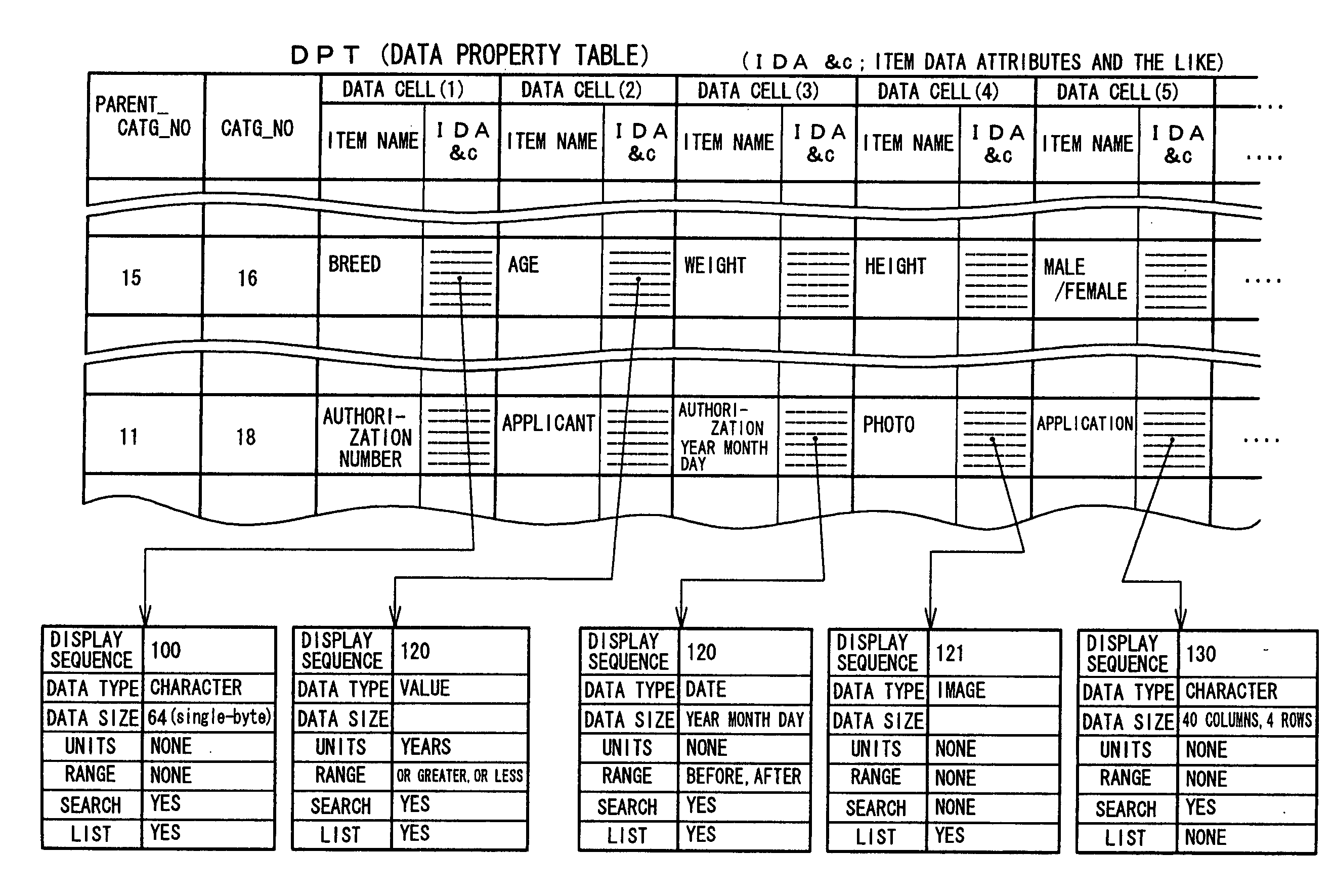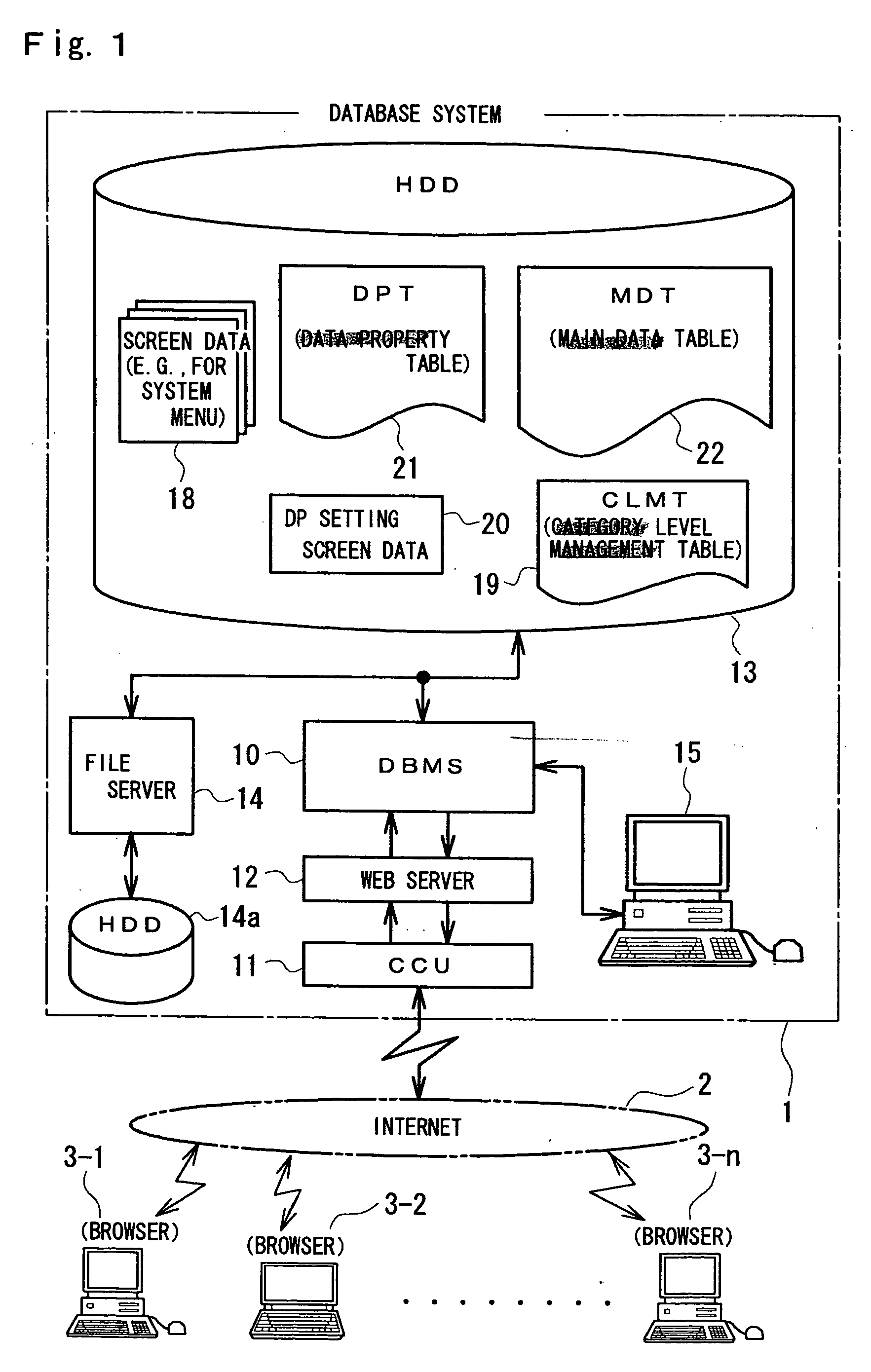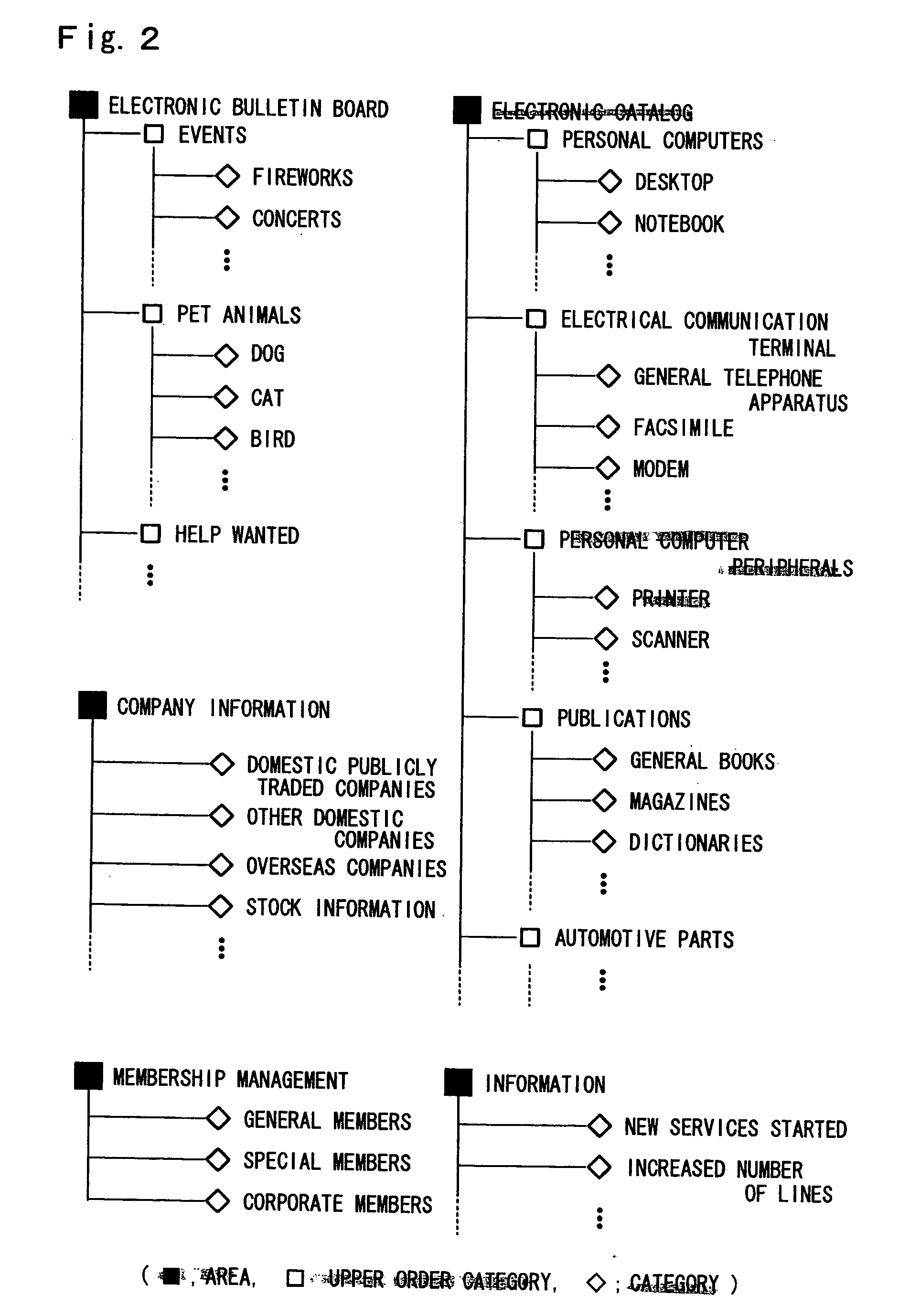Database system
a data base and system technology, applied in the field of data base systems, can solve the problems of large time and labor expenditure, difficult editing task, and complex design of table structure,
- Summary
- Abstract
- Description
- Claims
- Application Information
AI Technical Summary
Benefits of technology
Problems solved by technology
Method used
Image
Examples
Embodiment Construction
[0077] An optimum embodiment of a database system (hereinafter referred to as the DBS) according to the present invention is described below, with reference made to accompanying drawings.
[0078] First, FIG. 1 shows a system configuration diagram of an online DBS to which the present invention is applied.
[0079] In this drawing, the reference numeral 1 denotes the DBS, 2 is the Internet, and 3-1 to n are clients (terminals such as personal computers) connected to the Internet 2 via modems and web browsers.
[0080] In this case, the DBS 1, similar to the case of a conventional DBS, has a database management system (hereinafter referred to as the DBMS) 10 connected to the Internet 2 via a communication control unit 11 such as a router and a web server 12, the DBMS 10 being connected to a hard disk drive (hereinafter referred to as the HDD) 13 for data storage and a file server 14, and to a personal computer 15 provided for management.
[0081] The DBS 1 has an HDD 13, into which are store...
PUM
 Login to View More
Login to View More Abstract
Description
Claims
Application Information
 Login to View More
Login to View More - R&D
- Intellectual Property
- Life Sciences
- Materials
- Tech Scout
- Unparalleled Data Quality
- Higher Quality Content
- 60% Fewer Hallucinations
Browse by: Latest US Patents, China's latest patents, Technical Efficacy Thesaurus, Application Domain, Technology Topic, Popular Technical Reports.
© 2025 PatSnap. All rights reserved.Legal|Privacy policy|Modern Slavery Act Transparency Statement|Sitemap|About US| Contact US: help@patsnap.com



